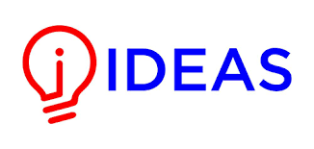Exploring Agile Testing Methodologies: A Perspective from the Software Industry
Keywords:
Software Testing Methodologies, Agile Testing, Software Testing, Software Quality AssuranceAbstract
Agile testing is a fast-paced testing method that adheres to the principles outlined in the Agile Manifesto. This research paper explores the adoption of Agile testing methodologies in the context of software houses in Pakistan. The study focuses on identifying the prevalent Agile testing techniques preferred by Software Quality Assurance (SQA) teams and the factors influencing their selection. A survey was conducted to gather insights from professionals in the industry, including SQA experts, developers, and project managers. The findings provided valuable information on the most widely used Agile testing methodologies and the reasons behind their popularity. The core objective of this research is to provide the knowledge related to implemented methodologies, reasons behind the selection of these methodologies, factors that influence the selection of testing tools and techniques, satisfaction level of their selected tools, and how effective their selected tools or techniques are in terms of reducing the number of bugs. The study's contribution lies in offering guidance to software houses in Pakistan by facilitating the adoption of effective Agile testing techniques. The research concludes with recommendations for improving testing practices and enhancing the overall quality of software products in the industry.
References
S. O. Barraood, H. Mohd, and F. Baharom, “A Comparison Study of Software Testing Activities in Agile Methods,” 2021.
A. R. L. Halounová, C. Heipke, “XXIII ISPRS Congress, Proceedings and Results – Volume XLI, Part A, 2016”, [Online]. Available: https://isprs-archives.copernicus.org/articles/XLI-A/1/2018/
J. Yu et al., “An Agile Testing Framework of Four Quadrants,” J. Phys. Conf. Ser., vol. 1792, p. 12004, 2021, doi: 10.1088/1742-6596/1792/1/012004.
J. C. S. Coutinho, W. L. Andrade, and P. D. L. Machado, “Requirements engineering and software testing in agile methodologies: A systematic mapping,” ACM Int. Conf. Proceeding Ser., pp. 322–331, Sep. 2019, doi 10.1145/3350768.3352584.
“Software Engineering: Sommerville, Ian: 9780133943030: Amazon.com: Books.” Accessed: May 22, 2024. [Online]. Available: https://www.amazon.com/Software-Engineering-10th-Ian-Sommerville/dp/0133943038
L. Pemmasani, “Study of Software Testing Techniques in Agile Development”.
P. Singh and P. Patel, “Impact of agile testing over traditional testing,” Int. J. Converging Technol. Manag., vol. 1, no. 2, 2015.
R. K. Lenka, S. Kumar, and S. Mamgain, “Behavior Driven Development: Tools and Challenges,” Proc. - IEEE 2018 Int. Conf. Adv. Comput. Commun. Control Networking, ICACCCN 2018, pp. 1032–1037, Oct. 2018, doi: 10.1109/ICACCCN.2018.8748595.
R. Ramler and C. Klammer, “Enhancing Acceptance Test-Driven Development with Model-Based Test Generation,” Proc. - Companion 19th IEEE Int. Conf. Softw. Qual. Reliab. Secure. QRS-C 2019, pp. 503–504, Jul. 2019, doi 10.1109/QRS-C.2019.00096.
B. Losada, J. M. López-Gil, and M. Urretavizcaya, “Improving agile software development methods using user objectives: An end user guided acceptance test-driven development proposal,” ACM Int. Conf. Proceeding Ser., Jun. 2019, doi: 10.1145/3335595.3335650.
M. Souza, A. C. Dias-Neto, I. K. Villanes, and A. T. Endo, “On the exploratory testing of mobile apps,” ACM Int. Conf. Proceeding Ser., pp. 42–51, Sep. 2019, doi: 10.1145/3356317.3356322.
R. Copche et al., “Exploratory testing of apps with opportunity maps,” ACM Int. Conf. Proceeding Ser., Nov. 2022, doi: 10.1145/3493244.3493248.
J. Itkonen, “Empirical studies on exploratory software testing,” 2011.
A. A. M. Qamar, Nosheen, “Evaluating the impact of pair testing on team productivity and test case quality–A controlled experiment”, [Online]. Available: The discussion of results, particularly the degradation plots and RMSE values, lacks depth. More detailed interpretation of what these results mean in practical terms would be beneficial.
M. M. Moe, “Comparative Study of Test-Driven Development TDD, Behavior-Driven Development BDD and Acceptance Test–Driven Development ATDD,” Int. J. Trend Sci. Res. Dev., vol. Volume-3, no. Issue-4, pp. 231–234, Jun. 2019, doi: 10.31142/IJTSRD23698.
I. K. Raharjana, F. Harris, and A. Justitia, “Tool for Generating Behavior-Driven Development Test-Cases,” J. Inf. Syst. Eng. Bus. Intell., vol. 6, no. 1, pp. 27–36, Apr. 2020, doi: 10.20473/JISEBI.6.1.27-36.

Downloads
Published
How to Cite
Issue
Section
License
Copyright (c) 2024 50SEA

This work is licensed under a Creative Commons Attribution 4.0 International License.




















